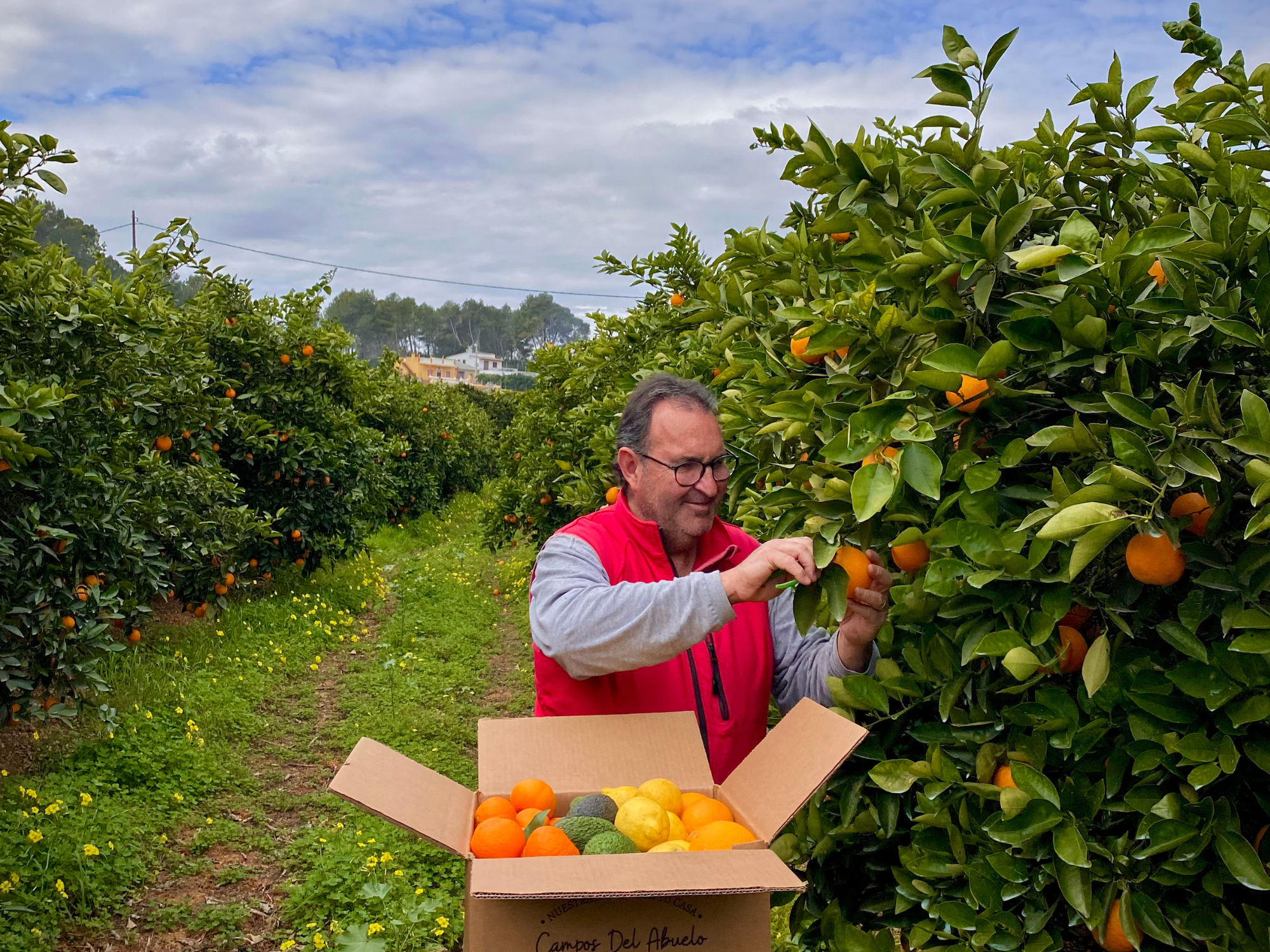You may have asked yourself this question at some point in your life. It turns out that the difference between one orange and another is normal and exists. From Campos del Abuelo, we are going to try to answer this very common question…
As good Valencian orange growers , we are proud to be able to provide you with this information directly from a field full of orange trees. So, together with Eduardo, founder of Campos del Abuelo and a very experienced farmer, we will tour the field and take the opportunity to ask him some questions.

Eduardo loves the countryside and it shows . Luckily, his love for the land is contagious, so there is no other option than to smile under the summer sun of Valencia. We are in July, so there are no more oranges on the trees, but a gentle breeze sways their leaves here and there…
Let's get to the point: our question to be resolved is what is the difference between juice oranges and table oranges . Under the shade of an orange tree, Eduardo tells us:
Well, first of all, all oranges can be eaten and all oranges can be made into juice . It is not necessarily the case that just because an orange is made for juice you cannot eat it, and vice versa.
What is true is that when we say that an orange is a juice orange , it is because organoleptically, that is, when you put it in your mouth, its pulp is not as fine as that of a table orange . It is not as fine as that of a table orange, which is eaten. And furthermore, the quantity of juice is also greater in a juice orange than in a table orange.
So, normally when we distinguish, we consider the largest orange to be a table orange and the smallest to be a juice orange . This is a distinction that we make, well, because we somehow give the smallest orange an outlet…
However, the reality is that regardless of size, there are oranges that are specifically for juice . I don't mean that they can't be eaten, but that their juice content is much higher than that of a table orange. They are varieties of orange , normally, from the white family.
We are getting closer to the differentiation between the two. Let's continue, because the question remains in the air: can I distinguish a table orange or a juice orange just by looking at it on the tree?
Well, look, broadly speaking... Well, it's not always exact, because the shape of oranges is sometimes capricious . But in general they are distinguished because the Navel family, as the word says, which in English means navel, has a little hole at the bottom that simulates a navel.

While the Whites do not have that belly button and the bottom part is tucked in so that no type of belly button is visible, that is, that little hole is closed. Then the Whites are also flatter, they are not as big or as round, they are flatter and smaller .
Basically, the most important difference that can be distinguished is in the navel, because it is the navel that in the Navel is pronounced, very pronounced, and in the White family, that navel does not exist.
Well, having made this distinction, let's get to know these two groups of oranges . This will make it more than clear how to distinguish a juice orange from a table orange.
Table oranges or the Navel family
So, as Eduardo said, table oranges are larger and have a navel, hence the name Navel. On an organoleptic level, their pulp has this “fineness” when eating it that I mentioned above, it is easier to eat segment by segment.
In addition, their color is a very deep orange . Their skin is thick , which makes them easy to peel when eating them as a dessert. In this image you can see an orange from the Navel group:

Juice oranges or the white family
So, knowing the oranges from the white group and reviewing Eduardo's words: juice oranges are smaller in size . And -excuse the redundancy- they have a lot of juice inside.
In addition, they do not have a navel and their skin is thinner, making it easier to squeeze them. Their colour is a less intense orange , a little more washed out. In this image you can see some oranges from the white group and the incredible juice they give.

As we saw, it is true that table and juice oranges have their differences , but as Eduardo says: All oranges can be eaten and all oranges can be used to make juice …
So if you want to make juice from a Navel orange variety, go ahead! And if you want to enjoy a delicious orange from the White family by peeling it with a knife like a farmer, of course you can do that too.
Oh! And if you are looking for more information about oranges, we recommend this article about Valencian oranges . Eduardo also accompanied us with his citrus grower's wisdom to explore the fascinating world of oranges...
We hope that your doubts have been resolved. And remember that in our online store you can find fruits and vegetables directly from the farmer to your home . You receive them in less than 24 hours and without any post-harvest chemicals.
Until next time and thanks for reading!




